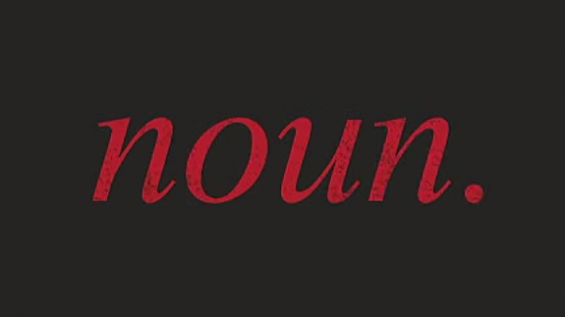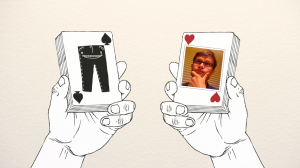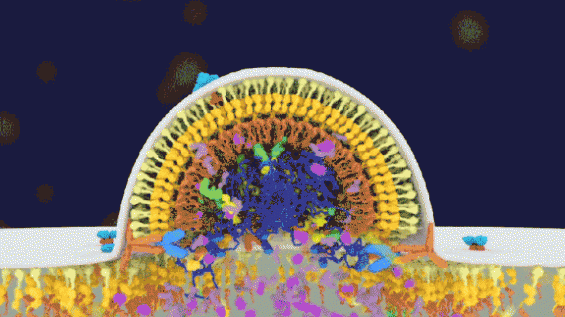
Why do nouns exist? A writing teacher explains.
The word noun derives from nomen, for “name.” This useful Latin trivia tells us exactly why nouns exist: to name all the things in our world. Many of us first learned about nouns in grade school, or—depending on our age—from the TV series Schoolhouse Rock!, which defines the parts of speech with catchy ditties. The song about the noun tells us that it is “a special kind of word” (“It’s any name you ever heard”) and that it is “quite interesting” (“a person, place, or thing”).
But nouns are even more “interesting” than that, especially the ones we want to use in writing that skews older than elementary school. It’s true that nouns name people, places, and things-you-can-taste-touch-see-smell-or-hear. But a noun can also name intangible things, like concepts, emotions, or ideas. Math is a noun; so are melancholy and myth. The linguist Steven Pinker calls a noun “simply a word that does nouny things; it is the kind of word that comes after an article, can have an ’s stuck onto it, and so on.”
Almost every English sentence contains at least one noun. They are indispensible when it comes to portraying a character or painting a scene.
Let’s take a look at a paragraph from The Pillars of Hercules in which the travel writer Paul Theroux describes “The 7:20 Express to Latakia”:
There was undoubtedly a more hallucinogenic experience available in poppy-growing Turkey than a long bus ride through Central Anatolia, though it was hard for me to imagine what this might be after a twenty-three-hour trip in the sulfurous interior of a bus of chain-smoking Turks, as day became twilight, turned to night, the moon passing from one side of the bus to the other, gleaming briefly in the snow of the Galatia highlands, fog settling and dispersing like phantasms, glimpses of dervishes, day dawning again, another stop, more yogurt, children crying in the backseats, full daylight in Iskenderun, rain in Antioch, all windows shut, the stale smoke condensing in brown bitter slime on the closed windows as fresh blue fumes rose from forty-nine burning cigarettes in this sleepless acid trip on the slipstream of secondhand smoke.
Like any effective scene description, this one is packed with “person, place, concrete thing, intangible thing” words.
• People: Turks, dervishes, children
• Places: Turkey, Central Anatolia, interior (of a bus), Iskenderun
• Concrete things: bus, day, night, moon, snow, fog, yogurt, backseats, rain, windows, smoke, slime, fumes, cigarettes
• Intangible things: experience, phantasms, glimpses, acid trip, slipstream
Some of these nouns—like bus ride, twilight, phantasms—slide back and forth between tangible and intangible, depending on the writer’s use and the reader’s frame of mind.
Theroux’s passage gives us a chance to look at other facets of nouns, too.
A common noun refers generically to people, places, or things. It might be vague or it might be specific, but it is always written in lowercase letters (bus, day, moon, snow, yogurt, phantasms, dervishes). It may also be abstract (glimpses, twilight).
A proper noun is more specific, in that it refers to one and only one person, place, or thing. It might name an individual (Paul Theroux), a geographical place (Turkey, Iskenderen, Antioch), or a particular train line (7:20 Express to Latakia). Proper nouns are written with initial capital letters (and when they are brand names they might even contain interior capital letters, as in iPhone and YouTube).
In compound nouns, words double up to express a whole that is more than the sum of its parts. They can be made of common nouns (bus ride), proper nouns (Central Anatolia), or both (Galatia highlands). They can be “open compounds” (acid trip) or closed ones (daylight, slipstream). Compounding has been common throughout the history of English, but writers and their editors don’t always agree on when and whether to splice words together.
The best nouns are concrete rather than abstract, specific rather than general. They are also evocative. Consider the difference between a demonstration of affection, a hug, and a caress.
Write: Nouns are the cornerstones of effective scene-writing. Go sit somewhere distinctive—a favorite garden, a cathedral, or even a grungy inner-city laundromat—and notice what is special or evocative about the place. Use concrete, vivid nouns to paint a picture of the place. Carefully choose a few idea/feeling/abstraction nouns to convey what makes the place unusual. Can the place serve as a metaphor for an intangible idea?
To learn more about words and punctuation, check out ‘How to use a semi-colon‘ and ‘When to use an apostrophe‘.
Constance Hale has written three books on writing: The first is Wired Style, the second is Sin and Syntax, and the third is Vex, Hex, Smash, Smooch. This blog post is excerpted with permission from Sin and Syntax.



Noun is ‘Naam’ (नाम)in Sanskrit.
Steven Pinker, as usual, with a piece-of-bollocks definition for the average Joe that is completely wrong.
“simply a word that does nouny things; it is the kind of word that comes after an article, can have an ’s stuck onto it, and so on.”
So I suppose “green” is a noun in “the green banana”, since it comes after the article “the”.
And in “The boy who looked at me’s car”, “me” is a noun.
And so on…